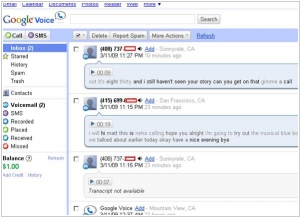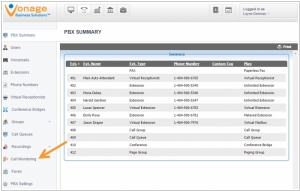Google Voice vs Vonage
May 18, 2023 | Author: Adam Levine
Google Voice and Vonage are both popular voice-over-internet-protocol (VoIP) services that offer communication solutions for businesses and individuals, but they differ in their features and target audience. Google Voice, provided by Google, is a versatile and cost-effective VoIP service that offers features such as call forwarding, voicemail transcription, SMS messaging, and conference calling. It integrates seamlessly with other Google services and provides a unified phone number that can be used across devices. Google Voice is suitable for individuals and small businesses looking for a reliable and easy-to-use communication solution.
On the other hand, Vonage is a more comprehensive VoIP service that caters to businesses of all sizes. It offers a wide range of features, including call routing, virtual receptionist, call recording, video conferencing, and CRM integration. Vonage provides scalable solutions tailored to meet the specific needs of businesses, offering advanced features for team collaboration and customer communication. It emphasizes its robust business phone system capabilities, making it an attractive choice for organizations that require a professional and feature-rich communication solution.
See also: Top 10 VoIP services
On the other hand, Vonage is a more comprehensive VoIP service that caters to businesses of all sizes. It offers a wide range of features, including call routing, virtual receptionist, call recording, video conferencing, and CRM integration. Vonage provides scalable solutions tailored to meet the specific needs of businesses, offering advanced features for team collaboration and customer communication. It emphasizes its robust business phone system capabilities, making it an attractive choice for organizations that require a professional and feature-rich communication solution.
See also: Top 10 VoIP services
Google Voice vs Vonage in our news:
2021. Ericsson to acquire cloud communications company Vonage for $6.2B

Ericsson, an international networking company, has made the strategic decision to embrace modernization by acquiring cloud communications company
2018. Vonage acquired cloud-based contact center startup NewVoiceMedia
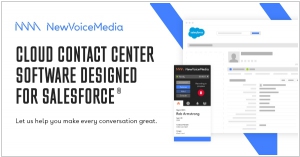
Vonage, a cloud-based unified communications provider, has completed the acquisition of NewVoiceMedia, a UK startup specializing in cloud-based contact center solutions, for a cash sum of $350 million. This strategic move by Vonage aims to expand its service offerings and increase profit margins across a broader range of value-added IP services. Currently, Vonage provides office phone systems, marketing automation, an existing call center solution, as well as MPLS and other IP services. With the integration of NewVoiceMedia's platform, Vonage will have enhanced capabilities to establish deeper connections with software providers such as Salesforce. This integration is vital to Vonage's approach in selling its services to potential customers. NewVoiceMedia is recognized by Vonage as the largest privately-owned, pure-play, cloud contact center company globally. It boasts approximately 700 customers, primarily consisting of mid- to large-sized enterprises, including prominent names like Adobe, Siemens, Time Inc., FundingCircle, and Rapid7.
2018. Google Voice version for enterprise came to G Suite
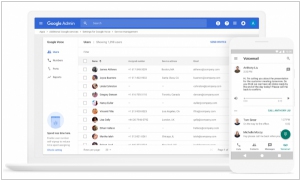
Google is introducing an enterprise version of its Google Voice service exclusively for G Suite users. While Google Voice has traditionally been popular among everyday consumers, offering numerous advantages beyond a regular phone number, the enterprise version aims to provide companies with similar functionalities. This includes AI-powered features such as voicemail transcription, which employees may already be utilizing in a manner that bypasses company guidelines. Administrators have the capability to provision and transfer phone numbers, access comprehensive reports, and configure call routing options. They can also assign phone numbers to departments or employees, granting them a universal number that isn't tied to a specific device. This simplifies communication by ensuring easy accessibility when needed. Additionally, the enterprise version includes a spam filtering feature, which proves beneficial in handling the influx of unwanted automated calls for various purposes.
2017. Google Voice gets group chat and other new features
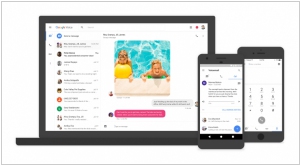
Google has introduced a refreshed version of its VoIP calling service, Google Voice, across mobile and web platforms. The primary focus of this update is to provide the product with a modernized look and feel, as it had not received significant upgrades for quite some time. Alongside the visual enhancements, the relaunch brings several new features, including photo-sharing, group conversations, Spanish-language voicemail transcription, and more. In the updated app, Google Voice incorporates separate tabs in the inbox for text messages, calls, and voicemail, as explained in the company's blog post. Additionally, conversations now remain in a continuous thread, simplifying the process of keeping track of messages from contacts within a single location.
2011. Google adds phone conferencing to Hangouts
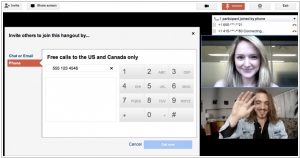
Skype's killer feature that propelled its immense popularity was undoubtedly video calling. The revenue generator for Skype is IP telephony. Google, however, was unable to replicate the same success with GTalk/GMail/Google Voice as people had already become accustomed to Skype. Nonetheless, Google aims to make strides with its rapidly expanding group video chat platform, Google Hangouts. Google's strategy involves integrating Hangouts with IP telephony. The new feature in Google Hangouts enables users to make calls to landlines and mobile phones, allowing individuals who are not currently at a computer to join online meetings. This integration is particularly crucial for business meetings, as it facilitates connecting clients or partners to the discussion. Presently, these external calls are limited to the United States and Canada and are free. However, it is highly likely that this functionality will soon be available in other countries through paid Google Voice calls.
2011. GMail VoIP is available almost globally
The VoIP service in GMail, previously available only in the U.S. and Canada, is now accessible to users in nearly all countries worldwide, supporting 38 different languages. However, there are a few countries where Gmail Call Phone is currently not available, including Argentina, China, Cuba, Egypt, Ghana, India, Iran, Jordan, Kenya, Mexico, Morocco, Myanmar, Nigeria, North Korea, Peru, Russian Federation, Saudi Arabia, Senegal, South Korea, Sudan, Syria, Thailand, United Arab Emirates, and Vietnam. With this global expansion, Google has also reduced its VoIP rates, making them slightly more affordable compared to its main competitor, Skype. For instance, a call to France costs 8 cents (compared to 16.9 cents in Skype), and a call to the USA costs 1 cent (compared to 1.9 cents in Skype). Similar to before, using GMail Call Phone requires a quick installation of a browser plug-in, which is the same plug-in used for video calling in GMail.
2010. Google added 60 more services to Google Apps
As part of their commitment, Google has now incorporated consumer services, which were previously limited to individual users, into the Google Apps suite. Recently, they introduced Google Voice (currently available for US and Canada users only), and today, they have expanded the offering to include a selection of 60 Google services. The account administrator has the flexibility to choose which services to include and which ones to exclude. Furthermore, the administrator has the authority to specify which users or groups will have access to each service. For instance, the marketing staff can be granted access to services like Adwords (for advertising purposes), Google Analytics (for monitoring site statistics), Blogger, and YouTube (for managing corporate blogs and video content). On the other hand, IT professionals may find Google App Engine useful for developing business applications. Other potentially valuable services for businesses include Google Reader (as an enterprise RSS reader) and Picasa (for creating intranet galleries). It's important to note that the option to add new services is also available in the free version of Google Apps.
2010. GMail = Unified Communications client
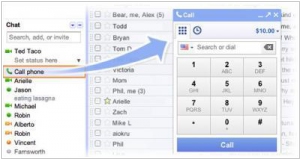
Few days ago the analytical company Frost & Sullivan stated that Google will soon storm the unified communications market, which is dominated by Cisco, Avaya and Microsoft. After all, Google has GMail, Google Voice, GTalk, Buzz, Gizmo5, Android, GISP and it remains just to combine all these technologies into single offering. And Google has decided to immediately confirm this forecast - from today GMail allows you to make and receive phone calls (thanks to the integration with Google Voice and Gizmo5). Meanwhile the VoIP service in GMail is available only in US. ***
2010. Google Voice hacked iPhone by means of HTML5

The story of Google Voice ban on the iPhone is over. Thanks to Apple and AT&T, Google Voice app hasn't arrived to iPhone yet. That's why Google went the other way and launched the web service, that works in the mobile Safari browser just like the native application. It allows you to make calls via the Web interface, view and listen to the voice mail, send and receive text messages. But the most interesting thing in this story is that the emergence of this application may cause a revolution in the current mobile marketplace. Earlier we wrote about the political games around the HTML5 implementation. And one of the major players in these political games is Apple, the manufacturer of the most popular mobile device, iPhone, which is known for its closeness. No application can get to iPhone unless it's approved by Apple. ***
2009. Google acquired Gizmo5

Multiple sources (including TechCrunch) say that almost exactly Google has bought Gizmo5 for $30 millions. If it's true, Skype now will get the very powerful competitor. Interesting, that month ago Skype was going to buy Gizmo5 itself in order to replace the Global Index technology (that was a reason of lawsuit) with Gizmo5 SIP-based platform. But now when Skype has after the Skype settlement, though, Gizmo5’s strategic value to Skype sort of plummeted. But, it turns out, that Gizmo5 has the strategis value to Google. And, really, it ideally fits Google's communication plans. First of all, GTalk can call only between internet users, but can't call PSTN and mobile phones. Gizmo5 will easily provide this opportunity to GTalk users. ***

